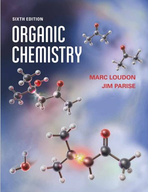Phenylacetic acid has a pKa of 4.31; acetic acid has a pKa of 4.76. (a) Which acid has
Chapter 3, Problem 3.5(choose chapter or problem)
Phenylacetic acid has a pKa of 4.31; acetic acid has a pKa of 4.76. (a) Which acid has the more favorable (smaller) standard free energy of dissociation? (b) What free energy would be expended to dissociate a 1 M solution of phenylacetic acid completely into 1 M of its conjugate base and 1 M H3O+? (c) What is the fraction of phenylacetic acid that is ionized if it is dissolved in water and the pH is adjusted to 4.5 with NaOH? (d) If equal molar amounts of phenylacetic acid and acetic acid are dissolved in water and the pH is adjusted to 4.5 with NaOH, which acid is more dissociated? Explain. (e) According to the pKa data, which type of polar effect is characteristic of the phenyl group: an electronwithdrawing polar effect or an electron-donating polar effect? Explain your reasoning.
Unfortunately, we don't have that question answered yet. But you can get it answered in just 5 hours by Logging in or Becoming a subscriber.
Becoming a subscriber
Or look for another answer
